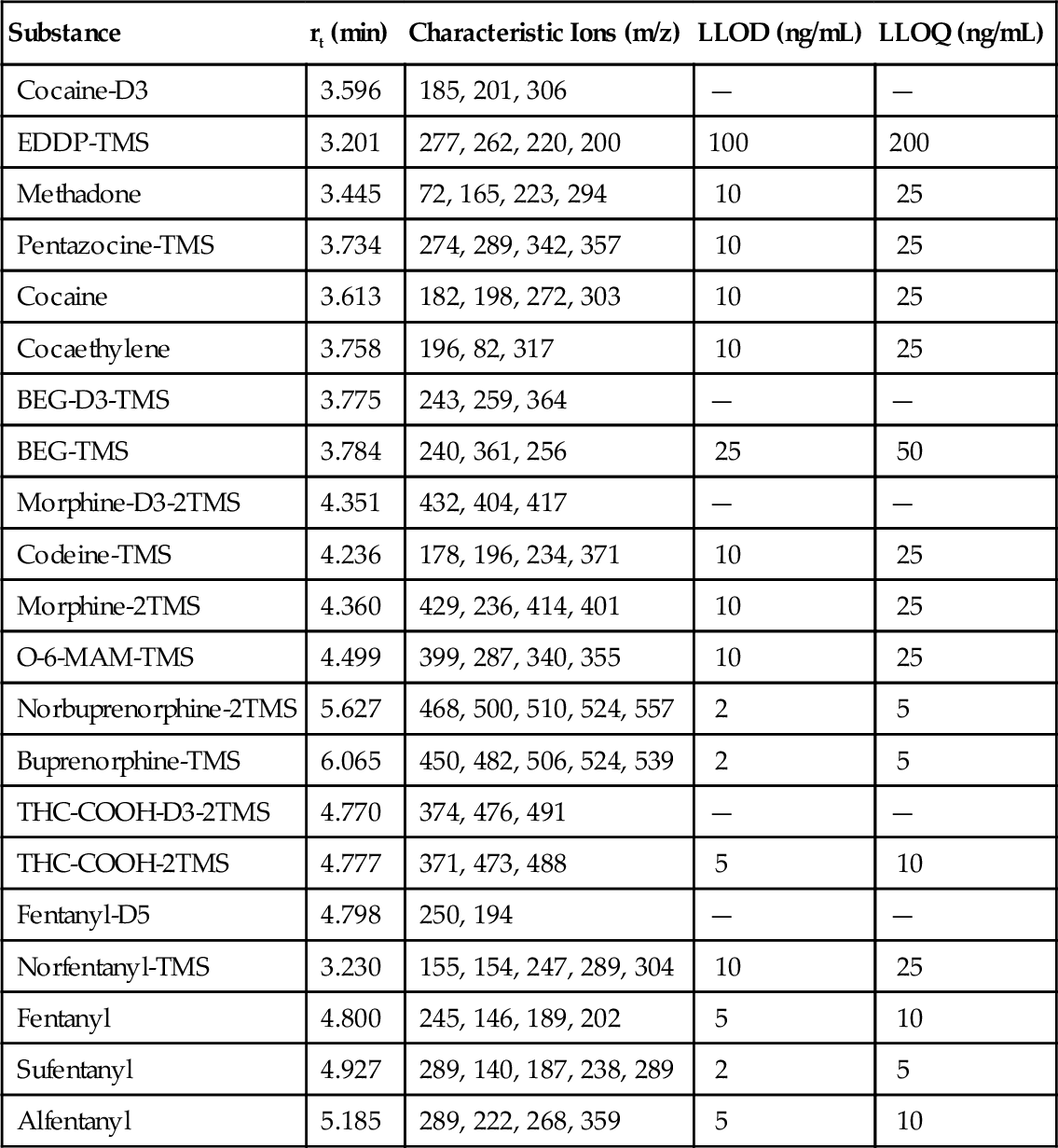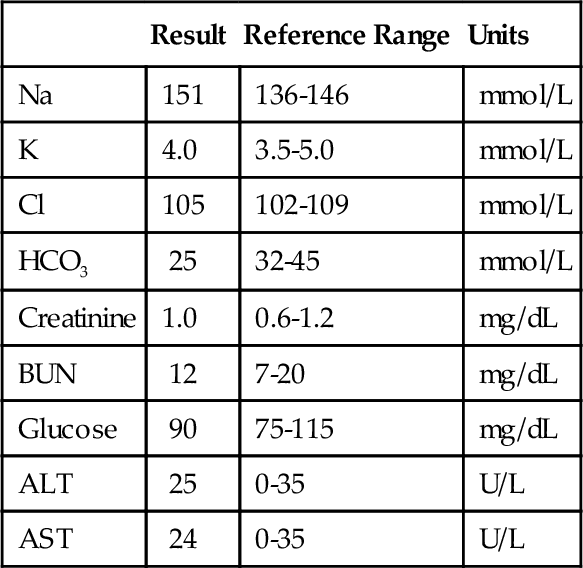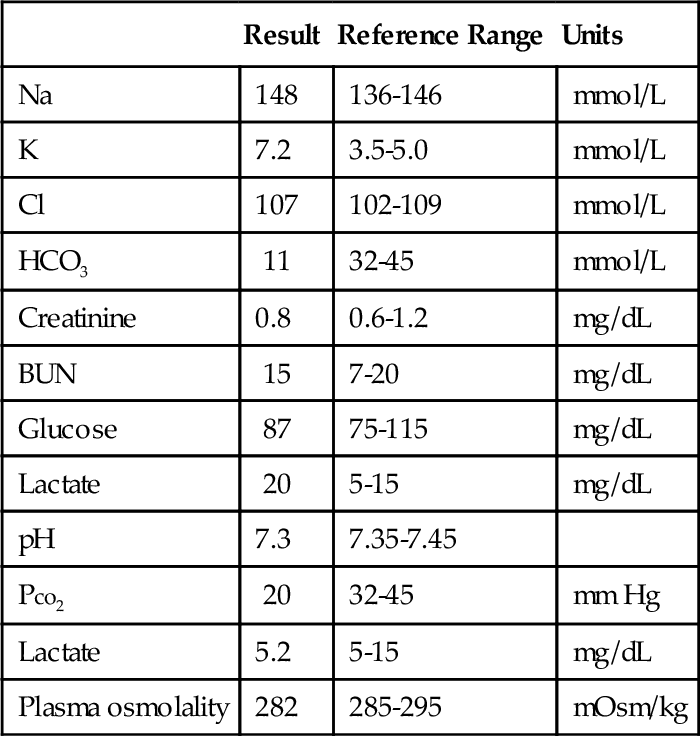Chapter 6 Questions B. Acute arsenic poisoning. C. Acute mercury poisoning. D. Acute lead poisoning. 2. A 16-year-old female patient with borderline personality disorder presented to the emergency department at 6 am, claiming she took “a lot of acetaminophen pills” the night before. Acetaminophen concentration in a plasma sample collected immediately after admission is 210 μg/mL with normal liver function tests (Figure 6-1). She denies chronic use of alcohol or acetaminophen. Which one of the following courses of treatment would you advise? B. Do nothing at this time; patients with borderline personality often present after taking approximately ten 500-mg tablets of acetaminophen. C. Confirm the acetaminophen serum level by mass spectrometry. D. Immediately start treatment with N-acetylcysteine (i.e., Mucomyst). E. Immediately start treatment with fomepizole (Antizol). 3. A 52-year-old man with a history of alcohol use is brought into the emergency department in a coma (Glasgow Coma Scale score of 6). His cleaning lady found him on the kitchen floor in his home that morning. He has no history of psychiatric illness. He has difficulty breathing and a blood pressure of 120/60 mm Hg. Urinalysis is normal. A tier I toxicology screen is negative. His blood ethanol level is 250 mg/dL. Other laboratory results are provided in Table 6-1. Which one of the following is the most likely diagnosis? B. Combined ethanol and methanol intoxication. C. Ethylene glycol intoxication. D. Isopropanol intoxication. E. Combined ethanol and isopropanol intoxication. 4. A 48-year-old man (body weight, 80 kg) is treated once daily with intravenous gentamicin, 400 mg in a 30-minute infusion. After 3 days, the peak gentamicin concentration (1 hour after the start of the infusion) is 25 mg/L, and the trough concentration (30 minutes before the start of the infusion) is 1.5 mg/L. The target ranges are 15 to 20 mg/L for the peak level and 0.5 to 1 mg/L for the trough levels. What would be a once-daily dose regimen for this patient to achieve peak and trough levels within the target range? B. 350 mg once daily. C. 300 mg once daily. D. 250 mg once daily. 5. A 50-year-old schizophrenic patient is treated with aripiprazole, 20 mg orally once daily. After several weeks, a predose blood sample is collected and aripiprazole and dehydroaripiprazole serum concentrations are measured as 200 μg/L and 76 μg/L, respectively. During a subsequent apparent manic episode, his psychiatrist decides to add oxazepam, 10 mg three times daily, and carbamazepine, 100 mg three times daily, as additional therapy. Aripiprazole and dehydroaripiprazole levels are then measured as 74 and 24 μg/L, respectively. Which one of the following best explains the altered antipsychotic drug levels? A. A metabolic interaction with oxazepam. B. A metabolic interaction with carbamazepine. C. Altered protein binding. D. CYP2D6 polymorphism (i.e., rapid metabolizer). E. CYP3A4 polymorphism (i.e., rapid metabolizer). 6. A urine sample of a 34-year-old female patient is examined by gas chromatography–mass spectrometry (GC-MS) after deglucuronidation, liquid/liquid extraction, and derivatization (Table 6-2 and Figure 6-2). Which one of the following compounds was definitely present in this patient’s urine? B. Fentanyl. C. THC-COOH (tetrahydrocannabinol carboxylic acid). D. Benzoylecgonine (BEG). E. Methadone. 7. Amitriptyline and its desmethyl metabolite, nortriptyline, were measured in the plasma of a 42-year-old white woman with depression who had been taking amitriptyline tablets for 1 week. The blood sample was collected before the next dose. A high-performance liquid chromatography (HPLC) chromatogram of a calibrator with amitriptyline and nortriptyline plasma concentrations of 100 ng/mL is shown in panel A of Figure 6-3. The HPLC chromatogram of the patient sample is shown in panel B. Which one of the following is the cause for the difference in the shape of the amitriptyline peak when comparing panels A and B? A. A deteriorating ultraviolet (UV) light detector. B. The presence of an unknown interfering compound. C. A deteriorating HPLC column. D. The presence of an amitriptyline enantiomer. E. Evaporation of solvent. 8. The compound depicted in Figure 6-4 is which one of the following? B. A benzodiazepine. C. A tricyclic antidepressant. D. An opioid. E. A selective serotonin reuptake inhibitor (SSRI). 9. Which one of the following drugs will most likely be detected in urine by automated immunoassay (i.e., tier I testing)? A. Lysergic acid diethylamide (LSD). B. γ-Hydroxybutyrate (GHB). C. Hydromorphone. D. Oxycodone. E. Mephedrone. 10. Tier I toxicology testing for drugs of abuse is usually performed by automated immunoassays. Which one of the following is the most common method currently used for tier II confirmatory testing? A. Quadrupole time of flight–liquid chromatography–mass spectrometry (qTOF-LC-MS). B. High-performance liquid chromatography with diode-array detection (HPLC-DAD). C. Liquid chromatography–mass spectrometry/mass spectrometry (LC-MS/MS). D. Gas chromatography with single quadrupole mass spectrometry (GC-MS). E. Gas chromatography with nitrogen-phosphorus detection (GC-NPD). 11. A 62-year-old male patient has been on amiodarone therapy (300 mg per day) for several months. His plasma amiodarone and desethylamiodarone concentrations measured by liquid chromatography–tandem mass spectrometry (LC-MS/MS) are 1.5 and 0.8 mg/L, respectively (reference ranges, 1.0 to 2.5 mg/L for amiodarone and 1 to 4 mg/L for amiodarone and desethylamiodarone together). To improve control of the patient’s cholesterol levels, his physician accidentally prescribed simvastatin, despite the increased risk for myopathies resulting from this combination of drugs. However, because the prescribing physician remembered a potential interaction between simvastatin and amiodarone, he again checked the patient’s amiodarone level 3 days after starting simvastatin. At that time, the plasma concentrations of amiodarone and desethylamiodarone were 1.6 and 0.9 mg/L, respectively. Which one of the following is the best explanation of the patient’s most recent amiodarone and desethylamiodarone levels? B. The desethylamiodarone concentration is within the reference range; therefore, the risk of developing amiodarone-induced pulmonary toxicity is minimal. C. Simvastatin inhibits biliary excretion of amiodarone. D. Simvastatin inhibits the metabolism of amiodarone. E. The blood sample was collected too soon after starting simvastatin to make any definitive conclusions regarding potential interactions between these drugs. 12. A 42-year-old man with manic depression was traveling in Malaysia for the past several weeks and is brought to the emergency department after he was found by his sister in his apartment. He is comatose (Glasgow Coma Scale score of 6) with blood pressure of 124/76 mm Hg, heart rate of 92 beats/min, temperature of 38°C, and respiratory rate of 4 breaths/min. His skin is dry and he has dilated pupils. The electrocardiogram shows normal sinus rhythm with a QRS of 148 msec (normal, < 0.1 msec). His regular medications include lithium, amitriptyline, and oxazepam, which he has been taking for more than 1 year. Relevant laboratory results, including a tricyclic antidepressant level measured by immunoassay, are as shown in Tables 6-3, 6-4, and 6-5. A. A pseudocholinesterase assay. B. Toxicologic screening by GC-MS. C. A methanol assay by gas chromatography (GC). D. Toxicologic screening for amphetamines. E. No additional testing is needed at this time. Table 6-4 13. A 28-year-old man with no prior history of psychosis was brought to the emergency department after his roommate reported he was standing on his bed screaming that there were snakes everywhere. The roommate also reported that the patient had “snorted a couple of lines of bath salts.” The patient was tachycardic with a heart rate of 144 beats/min. An electrocardiogram showed occasional premature ventricular contractions and a corrected QT interval (QTc) of 430 msec (normal male, < 430 msec; female, < 450 msec). His temperature was 100.8°F and his pupils were dilated. Standard hematology, chemistry, and liver function tests were normal. Serum levels of acetaminophen and salicylate were negative. A blood alcohol level was also negative. A tier I urine screening test for drugs of abuse (DOA) was negative. Which one of the following best explains why the tier I urine screening test was negative? A. The bath salts contained cocaine, which is not detected by tier I DOA screening assays. B. The bath salts contained methamphetamine, which is not detected by tier I DOA screening assays. C. The bath salts contained oxycodone, which is not detected by tier I DOA screening assays. D. The bath salts contained 3,4-methylenedioxymethamphetamine (MDMA), which is not detected by tier I DOA screening assays. E. The bath salts contain mephedrone, which is not detected by tier I DOA screening assays. 14. A 1625-g white male baby was delivered by cesarean section at a gestational age of 34 weeks. The neonate showed signs of respiratory insufficiency necessitating artificial ventilation for 5 days. Apnea was treated with caffeine (10 mg/kg as a loading dose followed by a dose of 2.5 mg/kg once daily). On the seventh day after birth, he was transferred to another hospital. There were no changes in therapy, but 2 days after admission to the new hospital, the infant’s condition deteriorated. Tachypnea, tachycardia, compromised circulation, vomiting, and convulsions were seen. A serum level of caffeine was determined by LC-MS/MS. The therapeutic range is 5 to 20 mg/L. Which one of the following represents the best explanation for this patient’s symptoms and the accompanying data (Figure 6-5)? B. Subtherapeutic caffeine level. C. Acetaminophen intoxication. D. Phenytoin intoxication. E. Theophylline intoxication. 15. A 43-year-old depressed male farmer is brought to the emergency department by his wife after she found him in the barn 2 hours earlier. His symptoms included chest pain, dyspnea, and cough, accompanied by abundant secretion, blurred vision, constricted pupils, sweating, hypersalivation, hypotension, bradycardia, and fasciculations. A basic metabolic panel, liver function tests, and blood gases were all normal. Toxicologic screening for tricyclic antidepressants, acetaminophen, salicylate, barbiturates, benzodiazepines, and others drugs of abuse is negative. Despite these negative results, intoxication is still suspected. Which one of the following toxicology tests would you recommend performing with the highest priority? B. A serum butyrylcholinesterase activity assay. C. A serum strychnine assay. D. A serum clenbuterol assay. E. A serum cyanide assay. 16. A 30-year-old schizophrenic patient, who was discharged on olanzapine (15 mg per day) and lorazepam (8 mg per day), was readmitted to a psychiatric ward 10 days later for recurrence of auditory hallucinations and delusions of reference as well as aggressive behavior. His family actively monitors his drug compliance. The patient does not take caffeine-containing liquids or tablets and does not take St. John’s wort or activated charcoal. On initial discharge from the hospital, the olanzapine plasma concentration measured by LC-MS/MS was 51.2 ng/mL. On readmission, this level was 15.6 ng/mL, which is below the suggested minimum threshold for therapeutic efficacy of 23.2 ng/mL. Which one of the following is the most likely reason for this fluctuation in this patient’s plasma concentration of olanzapine? A. His inpatient diet differs from his outpatient diet. B. Olanzapine is metabolized by CYP1A2, and he is a slow metabolizer of olanzapine. C. Outside the hospital, he takes over-the-counter medication that interacts with olanzapine. D. Outside the hospital, he is more mobile, leading to decreased drug levels. E. Differences in smoking restrictions inside and outside the hospital lead to differences in drug levels. 17. A 65-year-old woman presents to the emergency department with a chief complaint of weakness. She has an approximately 1-week history of increasing shortness of breath and several days of confusion, hallucinations, and minimal urine output. She is afebrile, but in moderate respiratory distress. She is also lethargic but oriented to person and place. Chest examination revealed bilateral rales, and cardiovascular examination revealed a grade III/VI systolic ejection murmur at the left sternal border, radiating to the left axilla. Her past medical history is significant for adult-onset diabetes, peripheral vascular disease, congestive heart failure, neuropathy, nephropathy, anemia, and osteomyelitis. Her current medications include insulin NPH, 40 IU in the evening; glipizide, 10 mg in the morning; furosemide, 80 mg/day; and enalapril, digoxin, hydralazine, amitriptyline, and temazepam, all in unknown doses. Initial vital signs are blood pressure: 96/60 mm Hg; heart rate: 50 beats/min; respiratory rate: 20 breaths/min; and body weight: 80 kg. Laboratory values are shown in Table 6-6. An electrocardiogram showed wide-complex bradycardia without P waves. Toxicology screen results are: digoxin: 3.8 ng/mL (therapeutic range, 0.8 to 2.0 ng/mL); amitriptyline + nortriptyline: 256 ng/mL (therapeutic range, 95 to 250 ng/mL); and benzodiazepines positive on a urine screen. Which one of the following is the best explanation for her symptoms? A. Hyperkalemia resulting from amitriptyline toxicity. B. Hypokalemia and nortriptyline toxicity resulting from renal insufficiency. C. Hyperglycemia and respiratory acidosis resulting from benzodiazepine intoxication. D. Hyperglycemia resulting from insulin toxicity. E. Hyperkalemia and digoxin toxicity resulting from renal insufficiency. 18. A 6-year-old girl is brought into the emergency department with nausea, vomiting, sinus bradycardia, and a blood pressure of 140/80 mm Hg. She drank “tea” that she made from some leaves she picked in the garden. The plants are shown in Figure 6-6. An assay for which one of the following compounds would most likely be positive in this patient? B. Salicylate. C. Cannabis. D. Digoxin. E. Opiates. 19. At midnight, a 21-year-old man is brought into the emergency department in a coma (Glasgow Coma Scale score of 8) after attending a dance party. On initial evaluation, he had the following vital signs: blood pressure: 85/60 mm Hg; temperature: 38.7°C. Laboratory results are shown in Table 6-7. Serum assays for acetaminophen, salicylate, and alcohol and urine screening for tier I DOA were negative except for the presence of amphetamines. Ingestion of which one of the following party drugs most likely caused the current condition of this patient? B. Magic mushrooms. C. GHB. D. Cocaine. E. MDMA (Ecstasy). 20. An adult patient with manic depression is on sustained-release lithium carbonate therapy. She usually has a serum lithium concentration of approximately 0.6 mmol/L (therapeutic range, 0.6 to 1.2 mmol/L). You are consulted for your advice regarding a single recent lithium level of 2.1 mmol/L. The patient has not changed her dose regimen, nor were her other medications changed. The results of her basic metabolic panel were normal. The patient did not have any neurologic or gastrointestinal symptoms. The quality controls for the atomic absorption spectroscopy (AAS) assay performed in your clinical laboratory for lithium were within range. Which one of the following is the best explanation for this isolated elevated lithium level? A. This assay gives higher values than normal. B. This level was elevated because of hyperkalemia. C. This level was elevated because of decreased metabolism of lithium. D. This level was elevated because of decreased renal clearance of lithium. E. This sample was collected in a green-top tube. 21. A 29-year-old man with a history of psychiatric illness and substance and alcohol abuse presented to the emergency department in a confused state. His routine medications included haloperidol and oxazepam at unknown doses. Initial vital signs were body temperature: 36.1°C; blood pressure: 180/100 mm Hg; heart rate: 110 beats/min; respiratory rate: 50 breaths/min; oxygen saturation: 98%. His pupils were equal, round, and reactive to light. Physical examination revealed a diffusely tender abdomen and hypoactive bowel sounds. Glasgow Coma Scale score was 11. His laboratory results are shown in Table 6-8. Figure 6-7 shows the crystals found in his urine. Which one of the following is the most likely toxicologic explanation for this patient’s symptoms? B. Methanol intoxication. C. Combined ingestion of disulfiram and ethanol. D. Isopropanol intoxication. E. Ethylene glycol intoxication. 22. Because of a planned elective surgery and a risk for delayed wound healing, the immunosuppressive regimen of a 47-year-old female kidney transplant recipient (3 years after transplantation) was changed from sirolimus + mycophenolate mofetil + low-dose prednisolone to tacrolimus + low-dose prednisolone. Her sirolimus trough levels had always ranged between 5 and 8 ng/mL. Her mycophenolate mofetil levels were not monitored. In addition, her serum creatinine is 0.9 mg/dL (reference range, 0.6 to 1.2 mg/dL), and her hemoglobin level is 12 g/dL (reference range, 13.3 to 16.2 g/dL). After 6 days on tacrolimus (3 mg every 12 hours), the trough level measured by the antibody-conjugated magnetic immunoassay (ACMIA) technique run on a Dimension RxL (Siemens, Deerfield, IL) was 6.9 ng/mL. However, after 1 month of treatment, the trough level was 61 ng/mL. A follow-up level the next day was 51 ng/mL. Two days after stopping tacrolimus (the patient remained on low-dose prednisolone), the level decreased to 26 ng/mL. During the next 2 weeks, tacrolimus levels ranged between 19 and 27 ng/mL. Throughout this period, the patient’s creatinine and hemoglobin levels remained unchanged. In addition, her liver function tests were normal. At this point, which one of the following is the best recommendation? A. The patient should remain off tacrolimus until these levels have reached 5 to 10 ng/mL. B. Tacrolimus should be discontinued, and a different immunosuppressive drug should be started when tacrolimus levels become undetectable. C. The patient should immediately be started on a different immunosuppressive drug along with prednisolone. D. The patient should be genotyped for CYP3A4/3A5 polymorphisms. E. The samples should be retested for tacrolimus using another method. 23. You are provided with the urine sample of a 25-year-old man who was a regular cannabis user. He had soaked Hawaiian baby woodrose seeds (Figure 6-8) in water for approximately 3 hours and ingested six of them; he did not smoke marijuana that day. Approximately 40 minutes after ingesting the seeds, he started experiencing a sense of well-being as well as losing track of time. The urine sample was collected 9 hours after ingestion. His friend, a 29-year-old man, also ingested an unknown number of seeds; approximately 3 hours after ingestion, he became severely agitated and jumped out of a window, falling four floors. He was pronounced dead on arrival at the emergency department. Full tier I drug screening (i.e., opiates, cocaine, PCP, LSD, cannabinoids, barbiturates, benzodiazepines, and methadone) was performed on the β-glucuronidase/arylsulfatase–treated urine sample that you received. This was positive for cannabinoids and LSD. Which one of the following reasons best explains the positive results for cannabis and LSD on this urine drug screen? B. Cannabis was used within the prior 3 weeks, and the seeds contain sufficient amounts of LSA (lysergamide), which cross-reacts with some immunoassays for LSD, to cause these symptoms and be detectable in urine. C. Cannabis was used within the prior 3 weeks, and the seeds contain sufficient amounts of fentanyl, which cross-reacts with some immunoassays for LSD, to cause these symptoms and be detectable in urine. D. Hawaiian baby woodrose seeds contain sufficient amounts of cannabinoids and fentanyl, which cross-react with some immunoassays for LSD, to cause these symptoms and be detectable in urine. E. Hawaiian baby woodrose seeds contain sufficient amounts of fentanyl, which cross-reacts with some immunoassays for LSD and cannabis, to cause these symptoms and be detectable in urine. 24. A urine sample from a patient whose mother is suspected of having Munchausen syndrome by proxy is presented for stimulant laxative screening. The urine is from an 8-year-old boy with diarrhea who is otherwise healthy, but who took acetaminophen earlier that day for a headache. His mother, who is a smoker, has a long psychiatric history. There is suspicion of intoxication with Senokot, a senna-containing laxative. The urine sample was collected at the emergency department under observation by the treating physician and arrives in the laboratory a few hours later. The specimen is then sent to a reference laboratory that screens for stimulant laxatives by high-performance thin-layer chromatography (HP-TLC). The HP-TLC results come back as negative. A new sample is collected, again under observation by a physician, and is sent directly to a different reference laboratory that screens for stimulant laxatives by GC-MS. Rhein, the metabolite of senna, is found in this sample. Which one of the following is the best explanation for the negative result using the first sample, assuming that the alleged administration of a laxative has not changed? A. HP-TLC is an outdated method that is prone to technical errors. B. Cotinine from second-hand smoke interferes with the HP-TLC method, but not with the GC-MS method. C. Rhein rapidly degrades in urine, within a few hours, when the sample is kept at room temperature. D. The senna alkaloids in Senokot are not metabolized to rhein in this patient. E. The acetaminophen taken for a headache interfered with the detection of rhein by HP-TLC. 25. A 70-year-old woman (body weight, 60 kg) with a history of Waldenström’s lymphoma presented with mucosal bleeding. Her bone marrow was 95% replaced by malignant lymphoma cells. She is pancytopenic and febrile (38.5°C). Her white blood cell count is 0.39 × 109/L (reference range, 3.04 to 9.06 × 109/L), hematocrit is 25% (reference range, 38.8 to 46.6%), platelet count is 21 × 109/L (reference range, 165 to 415 × 109/L), relative serum viscosity of 2.3 cP (reference range, 1.4 to 1.8 cP), blood urea nitrogen is 18 mg/dL (reference range, 7 to 20 mg/dL), serum creatinine is 0.7 mg/dL (reference range, 0.6 to 1.2 mg/dL). In addition, an immunoglobulin M-κ monoclonal spike is present on serum protein electrophoresis with a concentration of 42.8 g/L. The patient was started on vancomycin, 1 g intravenously every 12 hours; ceftazidime, 2 g intravenously every 8 hours; and chemotherapy. The volume of distribution and half-life of ceftazidime are 0.23 L/kg of body weight and 1.6 hours, respectively. Ceftazidime shows first-order, one-compartment pharmacokinetics. On day 3, vancomycin and ceftazidime trough concentrations were measured by turbidimetric immunoassay and LC-MS/MS, respectively. The results were as follows: vancomycin, < 0.1 mg/L (target trough level, 5 to 10 mg/L); ceftazidime, 4.8 mg/L (peak levels, 159 to 186 mg/L; trough levels not well established). Which one of the following statements best explains these drug levels and identifies which test(s) should follow? B. There is a potential interference for the vancomycin assay. Ceftazidime levels are as expected. Recovery experiments should be performed for the vancomycin assay, and this level should be determined by another assay. C. The sample tube for the vancomycin and ceftazidime assays was mixed up with another tube. A new blood sample should be collected and reevaluated with this assay. D. The chemotherapeutic agents interfere with the vancomycin turbidimetric immunoassay. Therefore, dilution and recovery experiments should be performed for the vancomycin assay, and this level should be determined by another assay. E. The chemotherapeutic agents interfere with the ceftazidime assay. Therefore, dilution and recovery experiments should be performed for the ceftazidime assay, and this level should be determined by another assay. 26. A 45-year-old woman with manic depression has been receiving haloperidol 5 mg daily, lithium carbonate 800 mg daily, and oxazepam 10 mg twice daily. Several days into a heat wave, her psychiatrist decides to add carbamazepine 200 mg twice daily as a mood stabilizer. Two days later, the patient develops drowsiness, tremors, and muscle weakness. Laboratory values are shown in Table 6-9 Serum chemistry results are carbamazepine = 8 mg/L by immunoassay (therapeutic range, 6 to 12 mg/L), lithium, 1.6 mmol/L by atomic absorption spectroscopy (AAS, therapeutic range, 0.6 to 1.2 mmol/L), haloperidol, 10 ng/mL by LC-MS/MS (therapeutic range, 2.0 to 15 ng/mL). Which one of the following answers best explains the patient’s symptoms and represents the most appropriate therapeutic intervention? A. The patient is a slow metabolizer of carbamazepine. The carbamazepine dose should be reduced. B. The patient is dehydrated, leading to toxic lithium levels. The lithium dose should be reduced. C. Carbamazepine induces the metabolism of haloperidol. The haloperidol dose should be reduced. D. Oxazepam inhibits the metabolism of carbamazepine. The carbamazepine dose should be reduced. E. Carbamazepine inhibits the metabolism of lithium. The lithium dose should be reduced. 27. A 58-year-old man with endogenous depression has been treated with amitriptyline for 3 years. His dose has been 50 mg 3 times per day. He also takes oxazepam (10 mg 3 times per day) and ranitidine (10 mg 2 times per day). Recently, his physician prescribed acetaminophen (500 mg 4 times per day) for back pain. Before treatment with acetaminophen, his amitriptyline and nortriptyline serum levels, as measured by LC-MS/MS, were 125 and 62 ng/mL, respectively (therapeutic range amitriptyline, 120 to 250 ng/mL; amitriptyline + nortriptyline, 150 to 300 ng/mL; Figure 6-9). However, serum concentrations of amitriptyline and its metabolite became subtherapeutic, at 74 and 25 ng/mL, respectively, 1 week after starting acetaminophen therapy. Which one of the following is the best reason for the low serum levels of these tricyclic antidepressants? A. Acetaminophen induces increased metabolism of amitriptyline. B. Acetaminophen inhibits the metabolism of oxazepam, which then induces increased metabolism of amitriptyline. C. Autoinduction of amitriptyline metabolism. D. The patient’s blood sample was collected in a serum separator tube, rather than in a red-top tube (i.e., without gel). E. Acetaminophen displaces amitriptyline from serum albumin. 28. A 42-year-old man with alcoholism (body weight, 72 kg) is brought to the emergency department by ambulance. The patient is suspected to have drunk spiritus saponatus (spirit of soap). GS-MS analysis shows that his blood level of methanol is 495 mg/L. In addition, his blood alcohol level is 800 mg/L. The emergency department has run out of fomepizole, and you advise them to start intravenous ethanol therapy. Using the following information, which one of the following provides the best advice regarding the loading dose and maintenance dose for ethanol (i.e., the DL and the DM, respectively)? where DL = loading dose (mg); Vd = volume of distribution (= 0.7 L/kg); BW = body weight (kg); Ce = the target concentration of ethanol (mg/L; the target is 1000 to 1500 mg/L); C = the measured concentration of ethanol; DM = maintenance dose (mg/hour); Vmax = the maximum enzyme capacity (75 mg/kg/hr for nonalcoholic individuals and 175 mg/kg/hr for alcoholic individuals); Km = the Michaelis-Menten constant (138 mg/L in this case). A. DL = 23,000 mg and DM = 11,500 mg/hr. B. DL = 23,000 mg and DM = 157 mg/hr. C. DL = 11,500 mg and DM = 11,500 mg/hr. D. DL = 2,300 mg and DM = 157 mg/hr. E. DL = 46,000 mg and DM = 23,000 mg/hr. 29. A 17-year-old girl receives chemotherapy for osteosarcoma. The chemotherapeutic regimen includes high-dose methotrexate (MTX) at 12 g/m2 in a 4-hour infusion. MTX is measured in plasma by a fluorescence-polarization immunoassay (FPIA) method in samples collected at 24 and 48 hours after completion of the infusion; these concentrations were 15 and 1.8 μmol/L, respectively (toxic level >0.5 μmol/L at 48 hours). Based on these levels, leucovorin is given at a dose of 50 to 100 mg/m2 every 6 hours. The patient’s serum creatinine is normal. According to protocol, a third plasma sample will be collected at 72 hours after completion of the infusion, and leucovorin will need to be continued at the same dose if the MTX plasma concentration at 72 hours is 0.1 to 0.9 μmol/L. Lower concentrations would lead to discontinuation of leucovorin; higher concentrations would lead to a higher dose of the leucovorin. Based on these numbers, which one of the following statements is correct? B. At 72 hours, the MTX plasma concentration will be 1.0 μmol/L, and leucovorin treatment will be continued at the same dose. C. At 72 hours, the MTX plasma concentration will be 1.0 μmol/L, and leucovorin treatment can be stopped. D. It is impossible to predict the MTX plasma concentration at 72 hours from knowing the earlier concentrations. E. At 72 hours, the MTX plasma concentration will be 0.05 μmol/L, and leucovorin treatment can be stopped. 30. Your laboratory measures MTX plasma levels by an FPIA method. You receive a sample from a patient who received high-dose MTX as part of a chemotherapy regimen for lymphoma. Because of a potentially very high MTX concentration in the 96-hour postinfusion sample, it is diluted tenfold and 100-fold. Correcting for the dilutions, the MTX level in the tenfold diluted sample measures as 9.6 μmol/L, whereas the concentration in the 100-fold diluted sample measures as 50 μmol/L (toxic level > 0.5 μmol/L at 48 hours). At the time of the MTX infusion, the patient did not receive any other chemotherapeutic agents. However, the patient’s serum creatinine level had risen from a preinfusion level of 0.8 mg/dL (reference range, 0.6 to 1.2 mg/dL) to its current level of 6.8 mg/dL. The patient was hydrated and alkalinized and also received leucovorin and glucarpidase to minimize the side effects of the high-dose MTX therapy. Which one of the following provides the best explanation for the discrepancy in the MTX concentration measured in the two serially diluted plasma samples and the best action to take? B. Diluting plasma samples always leads to higher concentrations using an FPIA method. Another method should be used. C. Leucovorin interferes with measurement of MTX levels by FPIA. Another method should be used. D. Alkalinization with bicarbonate leads to higher MTX levels after dilution. The pH of the plasma sample should be adjusted before using this FPIA method. E. Glucarpidase leads to the production of an inactive metabolite of MTX, which produces concentration-dependent cross-reactivity in the FPIA method. Another method should be used. 31. A 57-year-old man (body weight, 70 kg) was mechanically ventilated and sedated for 3 days in the intensive care unit with a continuous infusion of midazolam (5 mg/hr). Five days after stopping the infusion, the patient was still comatose. The patient was roused by flumazenil, 0.4 mg. Blood samples were obtained at that time, and his laboratory values are shown in Table 6-10. Analysis of a serum sample by HPLC, which was collected 5 days after stopping the midazolam infusion, showed that midazolam (therapeutic range, 50 to 600 ng/mL) and α-hydroxymidazolam levels were both less than 1 ng/mL. Which one of the following statements best explains these observations? A. A 5 mg/hr intravenous midazolam infusion for 3 days is, by definition, an overdose. B. The patient has a single-nucleotide polymorphism in CYP3A5. C. Pharmacologically active midazolam conjugates accumulate because of renal dysfunction. D. The hydroxymetabolite of midazolam accumulates because of hepatic dysfunction. E. Midazolam and its metabolites need to be monitored using samples of whole blood rather than serum. 32. An 8-year-old Hispanic boy (height, 4 feet, 3 inches; body weight, 103 pounds) receives intravenous gentamicin therapy at a dose of 2.5 mg/kg every 8 hours. Peak and trough levels are determined at the third dose, as measured by automated immunoassay. The results are Cpeak of 12.5 mg/L (therapeutic range, 4 to 12 mg/L) and Ctrough of 1.1 mg/L (therapeutic range, 1 to 2 mg/L). Serum creatinine and liver enzyme levels are normal. The patient is not in an intensive care unit, nor is he receiving any medications known to affect the pharmacokinetics of gentamicin. Which one of the following is the best explanation for these levels, and what is the best dose recommendation? B. The current regimen (2.5 mg/kg every 8 hours) is, by definition, an overdose for any individual. Therefore, the dose should be lowered to 1.5 mg/kg every 8 hours. C. Because the patient is obese, gentamicin is eliminated faster than normally. Therefore, the dose should be raised to 3.5 mg/kg every 8 hours. D. Glomerular filtration is lower in obese patients, leading to decreased clearance of the drug and increased circulating levels. Therefore, the dose should be reduced to 1.5 mg/kg every 8 hours. E. Single-nucleotide polymorphisms in the enzyme responsible for metabolizing gentamicin are prevalent in the Hispanic population and result in increased drug levels. Therefore, the dose should be reduced to 1.5 mg/kg every 8 hours. 33. A 20-year-old female kidney transplantation recipient, currently on tacrolimus, mycophenolate mofetil, and prednisone, now receives oral posaconazole (200 mg every 8 hours) for preventing invasive fungal infections. Posaconazole is measured by LC-MS/MS, and a serum trough sample is collected after 1 week of treatment. The posaconazole peak (701.3 > 683.2) in the sample has an intensity of 1.6E9. The internal standard (IS = cyanoimipramine, 306.2 > 218.0) has an intensity of 9.0E9. The calibration line is posaconazole/IS ratio = 0.0110 + 0.422 × Conc (mg/L). Posaconazole has a relatively long half-life (i.e., 31 hours), with a flat concentration time profile. Posaconazole exhibits saturable absorption with difficulties in increasing systemic drug exposure in a linear manner with progressive dosage escalation beyond 800 mg/day. This has been attributed to both the relatively poor solubility of posaconazole and the action of P-glycoprotein, which continuously pumps the drug from the bloodstream into the gut. Given a target concentration for posaconazole of 0.7 mg/L, which one of the following is the best recommendation for treating this patient? A. Decrease the dose to 200 mg every 12 hours and monitor the posaconazole level again after 1 week. B. Decrease the dose to 200 mg every 24 hours and monitor the posaconazole level again after 1 week. C. Decrease the dose to 200 mg every 12 hours and monitor the posaconazole level again the next day. D. Increase the dose to 400 mg every 12 hours and monitor the posaconazole level again the next day. E. Increase the dose to 400 mg every 8 hours and monitor the posaconazole level again after 1 week. 34. A mother finds her otherwise healthy 12-year-old daughter in the morning alone in her room. The girl left a farewell note mentioning that the stress at school had become simply unbearable. A medicine bottle is found next to her with no label. The bottle is empty but has some white powder remaining in it and smells somewhat like vinegar. The patient is lethargic but arousable. The patient is hyperventilating (respiratory rate, 70 breaths/min), with a blood pressure of 90/70 mm Hg, a heart rate of 140 beats/min, and a body temperature of 40.2°C. Her laboratory test results in the emergency department are shown in Table 6-11. Which one of the following serum and/or urine assays is most likely to be positive? B. Opiates in urine. C. Acetaminophen in serum. D. Benzodiazepines in serum. E. Amphetamines in serum. 35. A 48-year-old woman is admitted to the hospital because of recurrent periods of bruising, epistaxis, and hematochezia. The patient denies injury and is not on any medication. There is no personal or family history of abnormal bleeding. Initial laboratory values are as shown in Table 6-12. Platelet aggregation studies were normal. The patient’s international normalized ratio (INR) and activated partial thromboplastin time (aPTT) were normalized by treatment with fresh frozen plasma and vitamin K (30 mg IV/day). After discharge, the patient redeveloped episodes of bleeding that successfully responded to fresh frozen plasma and vitamin K. During the daily infusion of 20 mg of vitamin K, her INR was 2.5 with an aPTT of 40 seconds. A temporary halt of the vitamin K therapy to enable evaluation of a possible hemorrhagic coagulopathy resulted in an increase of her INR and aPTT to 6.7 and 52 seconds, respectively, in 2 days. Coagulation tests revealed the following factor levels (reference range for each is 50% to 150%): FII = 22.3%, FVII = 8.0%, FX = 4.4%, FV = 130.5%, FIX = 28.3%, FVII = 15.5%. Protein C was 32.8% and free protein S was 25.8%. There was a prompt correction in vitro of her INR and aPTT after mixing patient and control plasma in a 1:1 ratio. Oral vitamin K (100 mg/day) completely corrected her INR and aPTT. Which one of the following intoxications best explains this clinical picture? B. Acetylsalicylic acid. C. Clopidogrel. D. Warfarin. E. Lithium. 36. An 18-month-old child with myelodysplastic syndrome is receiving a preparative chemotherapy-based regimen in preparation for hematopoietic stem cell transplantation. The regimen consists of busulfan, cyclophosphamide, and melphalan. Busulfan is given intravenously once daily for 4 days at a dose of 32 mg (80 mg/m2) per day. Therapeutic drug monitoring, using four blood samples collected on the first day of the regimen, during which no clinical toxicity is observed, reveals an area under the serum concentration time curve (AUC0-24h) for busulfan of 50 hours × mg/L. An optimal AUC0-24h for busulfan in children is 74 to 82 hours × mg/L. The relationship between AUC0-24h and busulfan dose is known to be linear. Which one of the following is the best recommendation with respect to the subsequent busulfan dosing based on these results? A. The dose regimen should not be changed for the remaining 3 days. B. The dose regimen needs to be decreased to 24 mg once daily for the remaining 3 days. C. The dose regimen needs to be increased to 52 mg once daily for the remaining 3 days. D. The dose regimen needs to be increased to 80 mg once daily for the remaining three days. E. Given the risk for clinical toxicity, the busulfan should be stopped immediately. 37. A 51-year-old man of Dominican origin with newly diagnosed human immunodeficiency virus (HIV) infection was admitted to the hospital with a 3-month history of weight loss, fevers, night sweats, malaise, and a productive cough. Physical examination showed tachycardia, temporal wasting, and diffuse lymphadenopathy. The serum calcium concentration was 15.3 mg/dL (reference range, 9 to 10.5 g/dL), albumin was 3.1 g/dL (reference range, 3.5 to 5.5 mg/dL), and creatinine was 3.5 mg/dL (reference range, < 1.5 mg/dL). The patient was found to have active pulmonary infection with Mycobacterium bovis, with multiple opacities on chest radiograph. Serum levels of parathyroid hormone (PTH) and parathyroid hormone–related peptide (PTHrP) were undetectable, 25-OH-vitamin D was 85 ng/mL (reference ranges: summer, 15 to 80 ng/mL; winter, 14 to 42 ng/mL), and 1,25-OH-vitamin D was 162 pg/mL (reference range, 25 to 45 pg/mL). After a course of antimycobacterial therapy, intravenous fluids, and glucocorticoids, the patient’s serum calcium level stabilized to 11 mg/dL. He was readmitted 18 months later with recurrent M. bovis infection. At that time, his serum calcium was 17.1 mg/dL, PTH and PTHrP were again undetectable, 25-OH-vitamin D was markedly elevated at 525 ng/mL, and 1,25-OH-vitamin D was greater than 180 pg/mL. These results and the temporal changes seen during this admission are shown in Figure 6-10. Which one of the following is the most likely reason for this patient’s hypercalcemia and markedly elevated 25-OH-vitamin D levels? B. M. bovis infection. C. Over-the-counter use of illegal vitamin D supplements. D. Antiretroviral medications. E. Antimycobacterial therapy.
Clinical Chemistry
Toxicology and Therapeutic Drug Monitoring

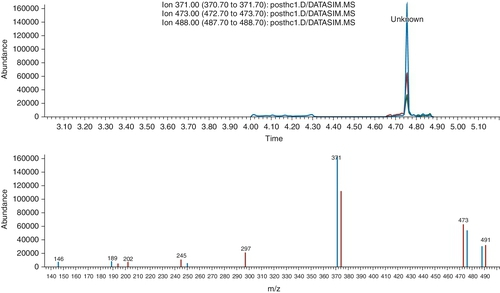
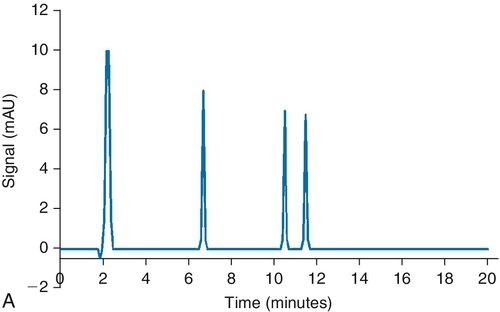
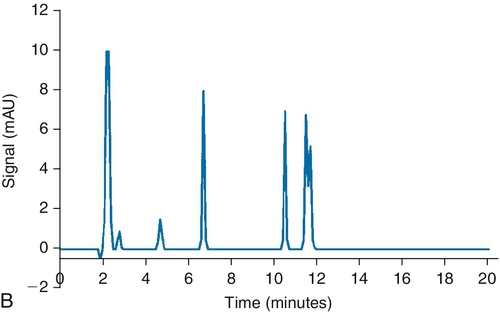
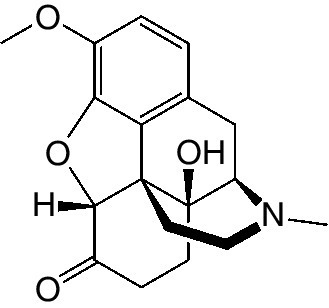
Testing for tricyclic antidepressants other than amitriptyline was negative. Assuming there has not been a sample mix-up, which one of the following would be of the most benefit to this patient at this moment?
Result
Ethanol
Negative
Benzodiazepines
Positive
Barbiturates
Negative
Opiates
Negative
Cocaine
Negative
Tetrahydrocannibinol
Negative
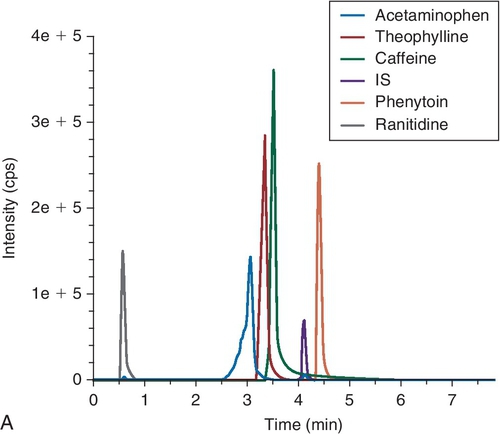
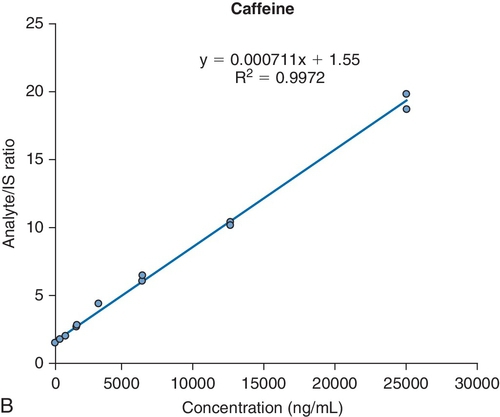
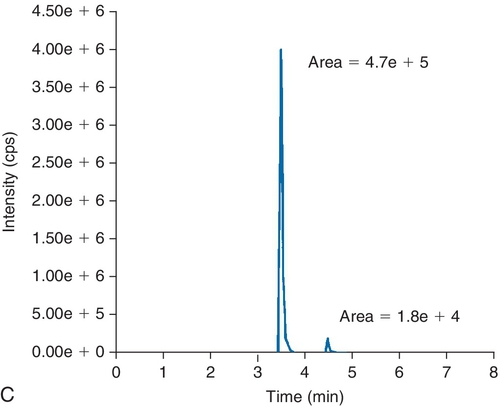


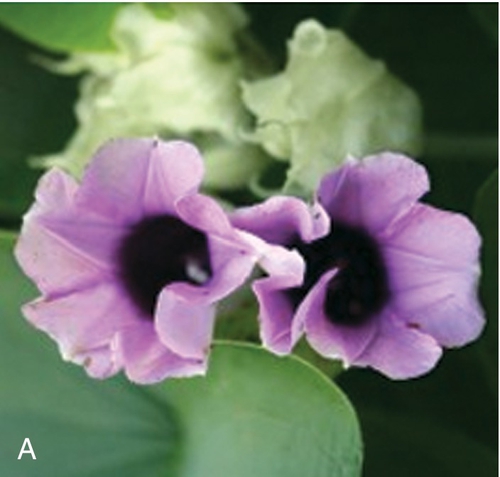

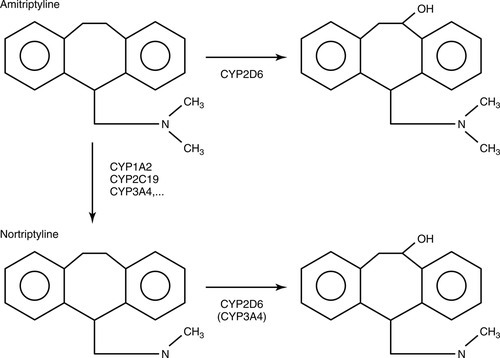


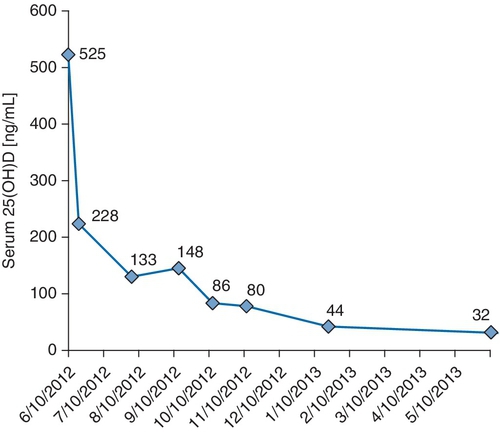

Stay updated, free articles. Join our Telegram channel

Full access? Get Clinical Tree


Clinical Chemistry: Toxicology and Therapeutic Drug Monitoring
Figure 6-1 Rumack-Matthew nomogram. A semi-logarithmic plot of serum acetaminophen concentration versus time after a single acute ingestion. The nomogram has been developed to estimate the probability of whether a plasma acetaminophen concentration in relation to the interval after ingestion will result in hepatotoxicity and, therefore, whether acetylcystine therapy should be administered. Cautions when using this chart: (1) Time coordinates refer to time after ingestion. (2) The graph relates only to plasma concentrations after a single, acute overdose ingestion. (3) The treatment line is plotted 25% below the Rumack-Matthew line to allow for potential errors in plasma acetaminophen assays and estimated time from ingestion of an overdose. (From Ford M, Delaney KA, Ling L, et al. Clinical Toxicology. Philadelphia, WB Saunders, 2001, pp 265–274.)
Figure 6-2 Compound table and gas chromatography–mass spectrometry chromatogram (GC-MS). Extracted ion GC-MS chromatogram. (From Strano-Rossi S, Bermejo AM, de la Torre X, Botrè F. Fast GC-MS method for the simultaneous screening of THC-COOH, cocaine, opiates and analogues including buprenorphine and fentanyl, and their metabolites in urine. Anal Bioanal Chem 2011;399:1623–1630).
Figure 6-3 High-performance liquid chromatograms with ultraviolet detection (at 254 nm) of amitriptyline (tr = 11.5 min), nortriptyline (tr = 10.5 min), and the internal standard clovoxamine (tr = 6.7 min). A, Control run; B, Evaluation of the patient sample. tr, Retention time.
Figure 6-4 Chemical structure of an unknown compound.
Figure 6-5 Chromatograms and a calibration line for caffeine. A. Chromatogram for acetaminophen, theophylline, caffeine, an internal standard (IS), phenytoin, and ranitidine (all contained in a methanol solution containing 500 ng/mL of each analyte). B, Calibration line for caffeine. C, Chromatogram of the patient’s serum sample.
Figure 6-6 Plant from which the patient made “tea.”
Figure 6-7 Envelope- and needle-shaped crystals. (From Jacobsen D, Hewlett TP, Webb R, et al. Ethylene glycol intoxication: evaluation of kinetics and crystalluria. Am J Med 1988;84:150.)
Figure 6-8 A and B, The Hawaiian baby woodrose plant (Argyreia nervosa) and its seeds.
Figure 6-9 Metabolic pathway of amitriptyline and nortriptyline. (Modified from Franssen EJF, Kunst PWA, Bet PM, et al. Toxicokinetics of nortriptyline and amitriptyline: two case reports. Ther Drug Monitor 2003;25:248-251.)
Figure 6-10 Change in 25-OH-vitamin D serum concentrations over time in a 51-year-old man.


